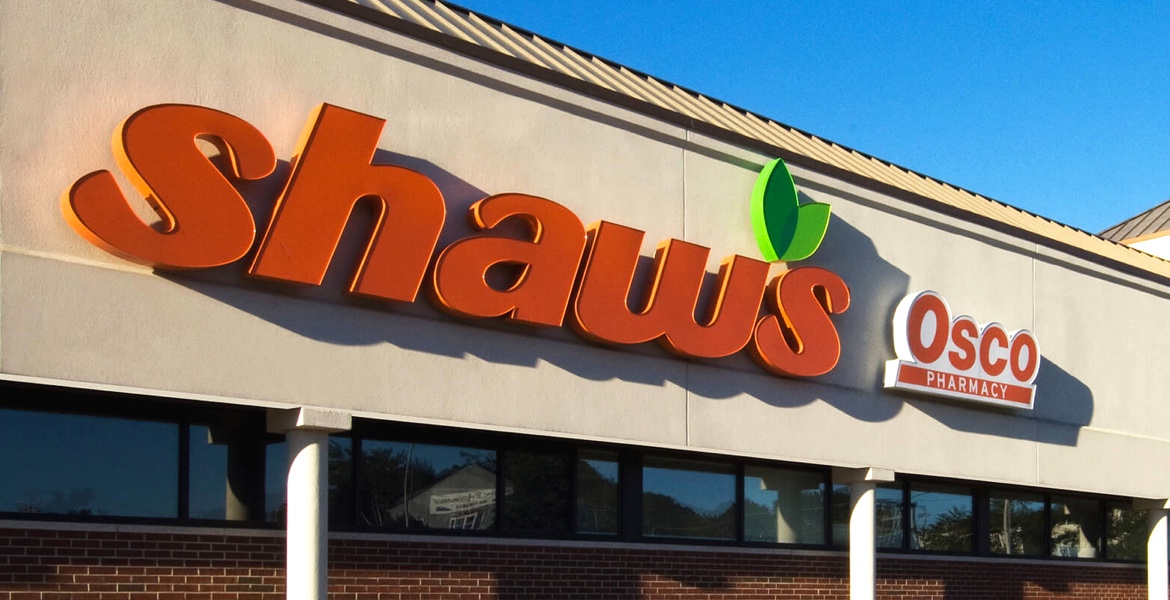Shaw’s First ‘Neighborhood Store’ Debuts at Eagle Square
Diversity in the market
Providence — In the supermarket business, every new location is an education in market research. With the customer base of the typical store within just a five- to eight-minute drive, it is crucial that each location be tailored to meet very specific needs.
When Shaw’s Supermarkets started developing its latest store, opening tomorrow on Valley Street at Atwells Avenue, the chain found itself making several firsts.
It is the supermarket company’s first so-called “neighborhood store,” which caters to the ethnic groups in one neighborhood. It is the first location with multilingual signs throughout the store. And it is the first to include a one-dollar aisle.
It also is part of a growing effort nationwide by supermarket companies seeking urban and downtown locations. As cities look back to their downtowns as residential and entertainment centers, grocery stores are responding to calls for convenient fruit and meat.
“Providence is not really a city changing anymore. It has changed and as a result the marketplace changed,” said Tom Farello, senior vice president of retail operations at Shaw’s. “As the marketplace changes, retailers have to respond.”
The market Shaw’s will serve involves the communities of Federal Hill, Olneyville and Mount Pleasant. The store will anchor the developing Eagle Square Commons, a mixed-use center of retail, condominiums, professional offices and work/display spaces for artists. The $36-million project covers a 13.5-acre site bordered by Atwells Avenue, Valley Street and Eagle Street.
Shaw’s new market carries two distinct characteristics. First, it is largely ethnic — 41.5 percent of the roughly 45,000 people who live in a one-mile ring of the store are Hispanic, according to CACI Marketing Systems. Shaw’s data shows an additional 24 percent are Italian, 17 percent are African-American and 7 percent are Asian.
The second characteristic is income. In 2001, 33.4 percent of the households in the same one-mile radius reported income of less than $15,000, according to CACI.
But the financial demographics are improving. In 1990, 40.3 percent of that same Shaw’s market recorded income of less than $15,000.
Research shows that nationally, poverty is shifting from inner cities to other communities. The number of poor people living in high-poverty neighborhoods declined to 6.7 million in 2000 from 7.1 million in 1990, according to the report, “Concentrated Poverty: A Change in Course,” by the Urban Institute in Washington, D.C.
This shift has opened up neighborhoods for development in a way that wasn’t previously available, said Susan Brown, director of the institute.
“I do know that cities are marketing to specific population groups that have the income to spend,” she said. “So there is a whole other line of research that is going on.”
In Providence, Eagle Square Commons joins a series of residential projects occurring downtown. Among them are the Burgess and the O’Gorman buildings on Westminster Street, and the Wilkinson Building across from them. In addition, the 330-unit Jefferson at Providence Place is going up behind the mall.
But Shaw’s is looking to cater first to a more immediate, low-income and ethnic market. Several of its employees, including the assistant store manager, speak Spanish and wear name tags that advertise it. The store includes the largest selection of Hispanic and Italian foods of any of Shaw’s roughly 187 locations.
The produce section includes both yellow and green plantains, yucca root and cane sugar. There are pigs’ hearts, live crabs and barrels of salted cod. In the Hispanic food aisle, a shopper can find corn husks, Jamaican Ginger Beer and American-made cereals in Hispanic packaging.
“That’s the kind of smart merchandising that has to be accounted for in any kind of retail location,” said Charles Cerankosky, an analyst with McDonald Investments in Cleveland. “You don’t just want to be price oriented. I think any good retailer is always adjusting the product mix to the individual market mix.”
To accommodate low-income families, Shaw’s stocked fruits that are on the small side, so that families with children can get more pieces per pound. The store also is offering meat in value packs that sell for about 30 cents less per pound.
And there is the “Dollar Deal” aisle, which sells sponges, toilet scrubbers and other household items for $1 each.
Farello said Shaw’s spent well over a year conducting research on the community. But catering to a market means more than responding to the numbers. The retailer also has gotten involved with the Hispanic Chamber of Commerce, sent employees to clean the community’s parks and donated about 20 computers to the William D’Abate and Samuel Bridgham schools.
“The store is going to have a very strong price format,” Farello said. “But more important is the variety because of all of the diverse ethnic backgrounds.”
—
by Lisa Biank Fasig, The Providence Journal
